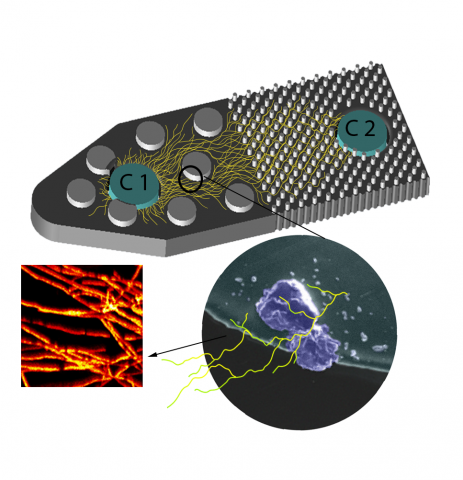"Visualizing the Hidden Half: Plant-Microbe Interactions in the Rhizosphere" Plant roots and the associated rhizosphere constitute a dynamic environment that fosters numerous intra- and interkingdom interactions, including metabolite exchange between plants and soil mediated by root exudates and the...
Filter results
Content type
Tags
- Virology (79)
- Immune Response (53)
- Time Sampled Measurement Datasets (50)
- Gene expression profile data (47)
- Differential Expression Analysis (46)
- Homo sapiens (34)
- Mass spectrometry data (31)
- Multi-Omics (30)
- Viruses (26)
- Omics (25)
- Health (23)
- Virus (23)
- Soil Microbiology (21)
- MERS-CoV (18)
- Mus musculus (18)
- Mass Spectrometry (14)
- Synthetic (14)
- sequencing (13)
- West Nile virus (13)
- Genomics (12)
- Ebola (11)
- Influenza A (11)
- PerCon SFA (10)
- High Throughput Sequencing (9)
- Metagenomics (9)
- Resource Metadata (9)
- Microbiome (8)
- Proteomics (8)
- Machine Learning (7)
- Microarray (7)
The theoretical prediction of x-ray absorption spectra (XAS) has become commonplace in electronic structure theory. The ability to better model and understand L-edge spectra is of great interest in the study of transition metal complexes and a wide variety of solid state materials. However, until...
The recently developed real-time nuclear–electronic orbital (RT-NEO) approach provides an elegant framework for treating electrons and selected nuclei, typically protons, quantum mechanically in nonequilibrium dynamical processes. However, the RT-NEO approach neglects the motion of the other nuclei...
Predicting accurate nuclear magnetic resonance chemical shieldings relies upon cancellation of different types of errors between the theoretically calculated shielding constant of the analyte of interest and the reference. Often, the intrinsic error in computed shieldings due to basis sets...
The accurate description of excited vibronic states is important for modeling a wide range of photoinduced processes. The nuclear–electronic orbital (NEO) approach, which treats specified protons on the same level as the electrons, can describe excited electronic–protonic states. Herein the...
The quantum mechanical treatment of both electrons and nuclei is crucial in nonadiabatic dynamical processes such as proton-coupled electron transfer. The nuclear−electronic orbital (NEO) method provides an elegant framework for including nuclear quantum effects beyond the Born–Oppenheimer...
The Phenotypic Response of the Soil Microbiome to Environmental Perturbations Project (Soil Microbiome SFA) at Pacific Northwest National Laboratory is a Genomic Sciences Program Science Focus Area (SFA) Project operating under the Environmental Microbiome Science Research Area. The Soil Microbiome...
Datasets
23
Stanford Synchrotron Radiation Lightsource Experimental Station 14-3b is a bending magnet side station dedicated to X-Ray Imaging and Micro X-Ray Absorption Spectroscopy of biological, biomedical, materials, and geological samples. Station 14-3b is equipped with specialized instrumentation for XRF...
Category
The Physical Electronics Instruments (PHI) Quantum 2000 X-Ray Photoelectron Spectrometer (XPS) is a unique Micro-Focused Scanning X-Ray system that uses a focused monochromatic aluminum K X-ray beam that can be varied in size from as small as 10 μm in diameter to approximately 200 μm. The beam can...
Last updated on 2023-05-02T18:08:23+00:00 by LN Anderson Fungal Monoisolate Multi-Omics Data Package DOI "KS4A-Omics1.0_FspDS68" Molecular mechanisms underlying fungal mineral weathering and nutrient translocation in low nutrient environments remain poorly resolved, due to the lack of a platform for...




